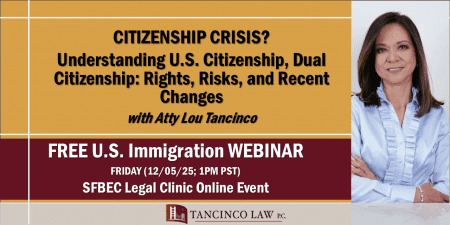Join this webinar with Atty Lou Tancinco this Friday, 12/05/25 at 1:00 PM PST, for an informative and engaging discussion on recent changes to citizenship applications, dual citizenship, denaturalization and travel tips at U.S. airports.
This is a free event. You must pre-register on this link and a Zoom link will be sent to you.


